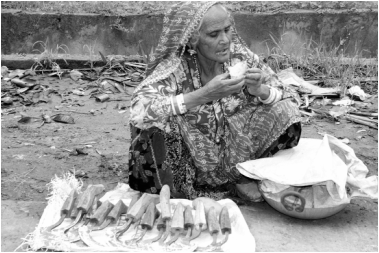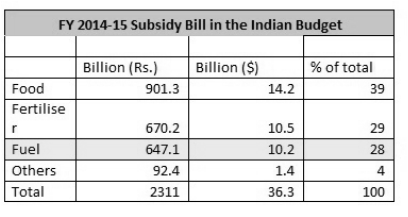This is a guest post by V. Janardhan
(Dr. V. Janardhan is a sociologist at the Department of Sociology, University of Hyderabad, India. He has worked and written on trade unions, industrial relations, and is presently fascinated with ethics, political sociology, and philosophy. [email protected])
‘Basic income’ has had a relation with capital-ism historically which would come as a surprise to many. Of course, it was not termed as ‘basic income’ until recently but the notion and purpose have been the same. While terminology underwent a change in one, the system itself kept changing in the case of the other. Except for extreme tendencies of opinion, the mainstream for one would concede that capital-ism has played a historic role; even Marx would so concede. Thus the system has stood the test of time, has been the main driver of the modernity project and will continue for an indefinite period. This is so notwithstanding the doomsday prophets, the latest being the environmental totalitarians. But this does not mean that one is being oblivious to ecology and its concerns. Indeed it will be organized capitalism that will adequately address the ecological question ultimately.
At all times historically, enlightened capitalists and their managerial cadres concerned themselves with ‘basic income’. Arguably, they made life easier, the world a better place to live in, and capital-ism sustainable thereby. The triumph of capital-ism, among other things, has been due to its ingenuity and its capacity to reinvent itself. While its detractors always saw in every crisis of capitalism the imminent demise of the system, capital and its agents saw in every crisis a challenge to engage and overcome.
Henry Ford was one of the foremost of entrepreneurs to discern the crucial connection between production and consumption. He realized that the same workforce that made commodities inside the factory consumed them outside. The product therefore had to be within the reach of an average worker-consumer. That could only happen if the worker had a guaranteed wage at all times. He would then not only afford buying the product, the latter’s stock would also move out of the warehouses making fresh rounds of production feasible. Thus came into being the ‘Five-Dollar Day’. Fordism, as the system came to be known, had as one of its main pillars the institutionalization of a ‘basic income’ which workers took home every day.
Income generation was an important aspect of Keynesianism. It was a method to bail out capital-ism. The state made heavy investments in the economy thereby generating employment … and incomes! By restoring purchasing power and empowering the consumer, the state restored dynamism to the system. Not only did capitalism get a reprieve, the citizenry too was spared much misery. The theme-song of capital seems to be a’la Raj Kapoor’s melody: Tumhaare bhi Jai Jai/ Hamare bhi jai jai/ Naa tum haare, naa hum haare. There is agony in capitalism. There is also ecstasy.
Now the time has come when the state can directly empower those citizens who otherwise do not figure in ‘effective demand’ because of lack of purchasing power. The direct empowerment would be through the disbursal of a ‘basic income’. In any case this would become inevitable in industrial and post-industrial societies as increasingly jobs get eliminated and more and more workforces get redundant. While the apocalyptic would dream of radical visions, the practical would get to work and see how suffering can be mitigated. ‘Basic income’ shows the way out.
‘Basic income’ can outlive even the capital-ism as we know it today. It is thus a stand-alone and an absolute concept/idea. Presently as global capital-ism creates a world subject to constant economic change, the idea and practice of basic income can ensure stability. One is today interested in a win-win situation where an out-of-work worker can still exist as a human being rather than in the ‘collapse’ of the existing and the bringing in of a fantasy. Ultimately, basic income is a sine qua non in any social system, and its provision an important imperative of capital and the state singly and jointly.
(Dr. V. Janardhan is a sociologist at the Department of Sociology, University of Hyderabad, India. He has worked and written on trade unions, industrial relations, and is presently fascinated with ethics, political sociology, and philosophy. [email protected])
‘Basic income’ has had a relation with capital-ism historically which would come as a surprise to many. Of course, it was not termed as ‘basic income’ until recently but the notion and purpose have been the same. While terminology underwent a change in one, the system itself kept changing in the case of the other. Except for extreme tendencies of opinion, the mainstream for one would concede that capital-ism has played a historic role; even Marx would so concede. Thus the system has stood the test of time, has been the main driver of the modernity project and will continue for an indefinite period. This is so notwithstanding the doomsday prophets, the latest being the environmental totalitarians. But this does not mean that one is being oblivious to ecology and its concerns. Indeed it will be organized capitalism that will adequately address the ecological question ultimately.
At all times historically, enlightened capitalists and their managerial cadres concerned themselves with ‘basic income’. Arguably, they made life easier, the world a better place to live in, and capital-ism sustainable thereby. The triumph of capital-ism, among other things, has been due to its ingenuity and its capacity to reinvent itself. While its detractors always saw in every crisis of capitalism the imminent demise of the system, capital and its agents saw in every crisis a challenge to engage and overcome.
Henry Ford was one of the foremost of entrepreneurs to discern the crucial connection between production and consumption. He realized that the same workforce that made commodities inside the factory consumed them outside. The product therefore had to be within the reach of an average worker-consumer. That could only happen if the worker had a guaranteed wage at all times. He would then not only afford buying the product, the latter’s stock would also move out of the warehouses making fresh rounds of production feasible. Thus came into being the ‘Five-Dollar Day’. Fordism, as the system came to be known, had as one of its main pillars the institutionalization of a ‘basic income’ which workers took home every day.
Income generation was an important aspect of Keynesianism. It was a method to bail out capital-ism. The state made heavy investments in the economy thereby generating employment … and incomes! By restoring purchasing power and empowering the consumer, the state restored dynamism to the system. Not only did capitalism get a reprieve, the citizenry too was spared much misery. The theme-song of capital seems to be a’la Raj Kapoor’s melody: Tumhaare bhi Jai Jai/ Hamare bhi jai jai/ Naa tum haare, naa hum haare. There is agony in capitalism. There is also ecstasy.
Now the time has come when the state can directly empower those citizens who otherwise do not figure in ‘effective demand’ because of lack of purchasing power. The direct empowerment would be through the disbursal of a ‘basic income’. In any case this would become inevitable in industrial and post-industrial societies as increasingly jobs get eliminated and more and more workforces get redundant. While the apocalyptic would dream of radical visions, the practical would get to work and see how suffering can be mitigated. ‘Basic income’ shows the way out.
‘Basic income’ can outlive even the capital-ism as we know it today. It is thus a stand-alone and an absolute concept/idea. Presently as global capital-ism creates a world subject to constant economic change, the idea and practice of basic income can ensure stability. One is today interested in a win-win situation where an out-of-work worker can still exist as a human being rather than in the ‘collapse’ of the existing and the bringing in of a fantasy. Ultimately, basic income is a sine qua non in any social system, and its provision an important imperative of capital and the state singly and jointly.


